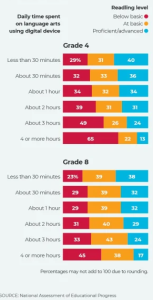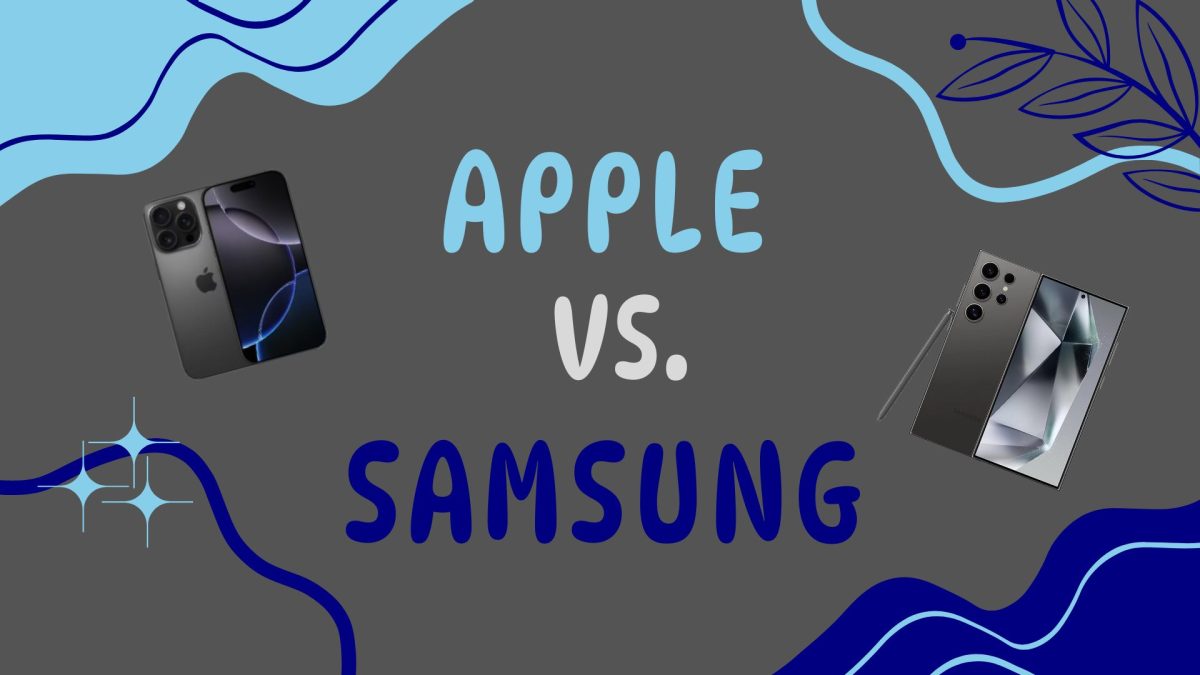Born between 2012 and 2024, the age group dubbed ‘Gen Alpha’ grew up in a world dominated with technology, some getting access to phones as early as eight years old. The AACAP, American Academy of Child & Adolescent Psychiatry, has reported that, “On average, children ages 8-12 in the United States spend 4-6 hours a day watching or using screens, and teens spend up to 9 hours.” With all this time spent on phones, many have expressed concern for children’s literacy.
Generation Alpha is the newest in the lineup, born 2012-2024, and while we don’t know much about them yet (they are kids, after all), we do know that there are at least 2.2 billion of them, as stated by “The Future of Commerce,” and we’re still counting. These kids grew up in the Covid-Era, something many people like to point fingers at for their behavior or declining academic skills. But others have pointed out that there are other issues at play–namely an increase in technology use and screen time.
The National Library of Medicine, has found a link between screen time and grades; “…A study conducted in the United States found significant link between higher levels of media multitasking and lower scores on standardized tests.”
Additionally, an article from the South African Journal of Communication Disorders noted that multiple studies showed that “an increase in the amount of screen time and the early age of onset of viewing has negative effects on language development.”
Yet another study, published in the journal JAMA Pediatrics, tracked nearly a half million children and teens and found that “more television, video game, and leisure internet time were linked to lower performance in reading and math.”
Lastly, the NAEP (National Assessment of Educational Progress) tests taken across the country have also shown a recent decline in scores with the 2019 data showing that “a little more than 1 in 3 American students read proficiently in grades 4 or 8.” The results shows that the reading scores in both grades had declined significantly since 2009 and 2017 regardless of state, race, income levels. The decline was shown in both private and public schools.
Why could technology be to blame? Data does show that phones, and the content on them, can deter students from studying, reading, or even practicing a skill. Especially with the rise of Short-Form content (like TikTok, Youtube Shorts, etc.), these often under one-minute videos are exciting and attention grabbing. The result can be scrolling through them for hours. And, according to research, a shortening of our attention spans. Students have less mental stamina and find it difficult to sustain their focus without over-stimulation.
According to Education Week, teaching reading to this new generation has some early elementary teachers concerned. The teachers are “tasked with teaching the foundations of reading to the first generation of true digital natives—children who have been exposed to the bright, blinking, fast-moving screens of electronic devices from birth, or close to it.”
The dopamine release caused by screen content hooks people in (especially children and teenagers) immediately. These videos can lead to children avoiding schoolwork or practice- either by getting sucked into their phone, or choosing to ignore it, because they have better, easier things to do that sustain them.

Mrs. Stephens, the librarian at MMS, noted an overall decline in the focus on the importance of literacy and the replacement of print texts with screens. She said,“[Covid] definitely did not help, but we were already on the decline.” Schools, not just in Ohio, have been firing trained librarians due to budget cuts, and instead have been hiring untrained aids and getting rid of physical copies of books. “Data shows that children, especially younger readers, retain information better with physical books,” Stephens says. The research supports this; having access to librarians and libraries in schools shows a clear benefit in students, as stated in an article by The Clermont Sun.
 In fact, research from the NAEP showed that it’s not just phones, television, and recreational screen time that is the problem. Even time spent learning and doing schoolwork on a screen as opposed to paper versions resulted in lower test results. For fourth graders across the nation, of those who spent less than 30 minutes of their school day on a computer or tablet, 40% tested proficiently. In contrast, for those who spent most of their school day (4 hours) learning on a computer, only 13% scored proficiently.
In fact, research from the NAEP showed that it’s not just phones, television, and recreational screen time that is the problem. Even time spent learning and doing schoolwork on a screen as opposed to paper versions resulted in lower test results. For fourth graders across the nation, of those who spent less than 30 minutes of their school day on a computer or tablet, 40% tested proficiently. In contrast, for those who spent most of their school day (4 hours) learning on a computer, only 13% scored proficiently.
In short, several studies are pointing to a decline. As technology use increases, children’s brains and priorities are changing.
So, how do we fix something like this? As discussed earlier, more access to libraries and physical books has shown to increase literacy rates in children. Consider writing to your school board expressing concern for your school and community library. Teachers can make sure that time each day is allocated to non-screen learning, reading, and activities. Advocate for screen limits, especially among toddlers and young children. And even for teens, set screen limits for yourself.
It may take a large societal shift and interventions for Gen Alpha to turn the negative data around.














